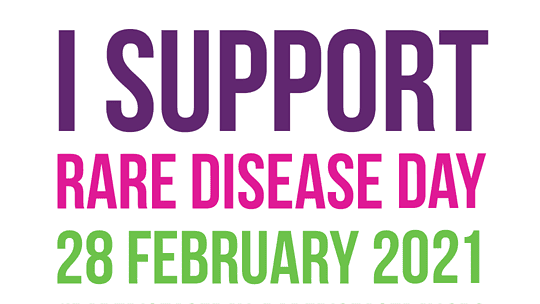
The Truth About Lyme Conference
Register today for The Truth About Lyme online conference broadcasting on February 6 – 10 hosted by Dr. Tom Moorcroft. Speaking will be two ASPIRE Professional Advisory Board Members Nancy...

Register today for The Truth About Lyme online conference broadcasting on February 6 – 10 hosted by Dr. Tom Moorcroft. Speaking will be two ASPIRE Professional Advisory Board Members Nancy...

After visiting over 20 doctors, getting seven misdiagnoses and his mental health declining further, Ben is finally diagnosed with PANDAS. A little-known and understood disorder without a...
Badenoch, J., Searle, T., Watson, I. et al. Tics in patients with encephalitis. Neurol Sci (2021). DOI: 10.1007/s10072-021-05065-w
“Tics were most commonly reported in the post-encephalitic period and involvement of the basal ganglia was frequently observed….Despite these limitations, the first literature review evaluating the presence of tics in reported cases of encephalitis showed that tics have been sporadically reported in cases of encephalitis resulting from autoimmune, infective, and unknown aetiology. Specifically, tics have been more commonly reported in the post-encephalitic period and involvement of the basal ganglia was frequently found. Furthermore, the association of new-onset tics and encephalitis, in the background of other neuropsychiatric abnormalities, has clinical implications in potentially improving the detection of encephalitis based on clinical features. Future research should focus on the categorisation and treatment of hyperkinetic movement disorders associated with encephalitis.”

Whether you think PANS/PANDAS is a Rare Disease or actually just rarely diagnosed, it is a day to educate people about PANS/PANDAS. The main objective of Rare Disease Day is to raise awareness...

Dritain Agalliu, PhD, is co-organizing the virtual Brain Barriers research conference in Cold Spring Harbor, NY on April 7 - 9, 2021. Abstract deadline is January 29, 2021. The conference is open...

This presentation provides an overview of how PANS/PANDAS impacts classroom functioning across physical, socio-emotional, academic, and behavioral domains. Presenters will describe strategies and...

Enroll Today I am excited to share a recent conversation with Jessica Gavin, PRAI Board Chair & IPR Principal Investigator, to talk about the International PANS Registry (IPR) and the...
Differential binding of antibodies in PANDAS patients to cholinergic interneurons in the striatum
Frick LR, Rapanelli M, Jindachomthong K, et al. Differential binding of antibodies in PANDAS patients to cholinergic interneurons in the striatum. Brain Behav Immun. 2018;69:304-311. doi:10.1016/j.bbi.2017.12.004
“In summary, our in vivo approach to characterizing antibody reactivity in patients with PANDAS has identified a novel candidate pathophysiology: specific autoantibody binding to striatal cholinergic interneurons. This focus on cholinergic interneurons fits well with the developing appreciation of the role of these cells in tic disorders. Identification of the specific antigens on these cells and the functional consequences of antibody binding may open new avenues for the understanding and treatment of PANDAS and related conditions.”
Maternal Autoimmunity and Inflammation are Associated with Childhood Tics and Obsessive-Compulsive Disorder: Transcriptomic Data show Common Enriched Innate Immune Pathways
Hannah F. Jones, Velda X. Han, Shrujna Patel, Brian S. Gloss, Nicolette Soler, Alvin Ho, Suvasini Sharma, Kavitha Kothur, Margherita Nosadini, Louise Wienholt, Chris Hardwick, Elizabeth H. Barnes, Jacqueline R. Lim, Sarah Alshammery, Timothy C. Nielsen, Melanie Wong, Markus J. Hofer, Natasha Nassar, Wendy Gold, Fabienne Brilot, Shekeeb S. Mohammad, Russell C. Dale,
Maternal Autoimmunity and Inflammation are Associated with Childhood Tics and Obsessive-Compulsive Disorder: Transcriptomic Data show Common Enriched Innate Immune Pathways,
Brain, Behavior, and Immunity, 2021,ISSN 0889-1591 DOI: 10.1016/j.bbi.2020.12.035.
Highlights
“Our findings demonstrate that maternal pro-inflammatory states, including autoimmune disease, are associated with tics/OCD in children, and support a possible role for maternal inflammation, in addition to immunogenetic and ‘neurogenic’ mechanisms in the aetiology of tic disorders and OCD. (Mataix-Cols et al., 2018) The breadth of immune conditions, including the heterogeneity of autoimmune diseases, and overlapping pathways in transcriptomic analysis of maternal blood and Tourette brain samples indicate that the innate immune response may be an important factor in disease expression. Inflammation is likely to be a more modifiable risk factor than susceptibility genes, and prospective studies which comprehensively assess pro-inflammatory states in mothers during pregnancy paired with detailed immunophenotyping, genomic and epigenomic testing, and careful evaluation of postnatal pro-inflammatory exposures in children, are needed to fully assess the role of inflammation as an environmental risk factor for neurodevelopmental disorders. Further understanding of the role of the immune system in neurodevelopment could unveil opportunities to mitigate risk to children by reducing exposure to inflammation and open new avenues for treatment.”
Investigational and Experimental Drugs to Treat Obsessive-Compulsive Disorder
Grassi G, Cecchelli C, Vignozzi L, Pacini S. Investigational and Experimental Drugs to Treat Obsessive-Compulsive Disorder. J Exp Pharmacol. 2021;12:695-706. Published 2021 Jan 5. doi:10.2147/JEP.S255375
“Treatment-resistance is a frequent condition for obsessive-compulsive disorder (OCD). Over the past decades, a lot of effort has been made to address this issue, and several augmentation strategies of serotonergic drugs have been investigated. Antidopaminergic drugs are considered the first choice as augmentation strategy for treatment-resistant OCD patients, but they seem to work only for a subset of patients, and none of them have been officially approved for OCD. Recently, the role of glutamate and inflammation in OCD pathophysiology clearly emerged, and this has led to several investigations on glutamatergic and anti-inflammatory agents. Results seem promising but still inconclusive. Probiotic interventions (considered to modulate the immune systems and the brain activity) are gaining attention in several psychiatric fields but are still at their early stages in the OCD field. Research on new treatment approaches for OCD is moving forward, and more than one hundred interventional trials are ongoing around the world. While the vast majority of these trials involve neuromodulation and psychotherapeutic approaches, only a small proportion (around 20%) involve the investigation of new pharmacological approaches (tolcapone, nabilone, psilocybin, troriluzole, nitrous oxide, rituximab, naproxen, and immunoglobulins). Here, we provide a comprehensive review of investigational and experimental drugs to treat OCD.”

On behalf of ASPIRE, thank you for your ongoing support, and we hope you have a happy and healthy New...